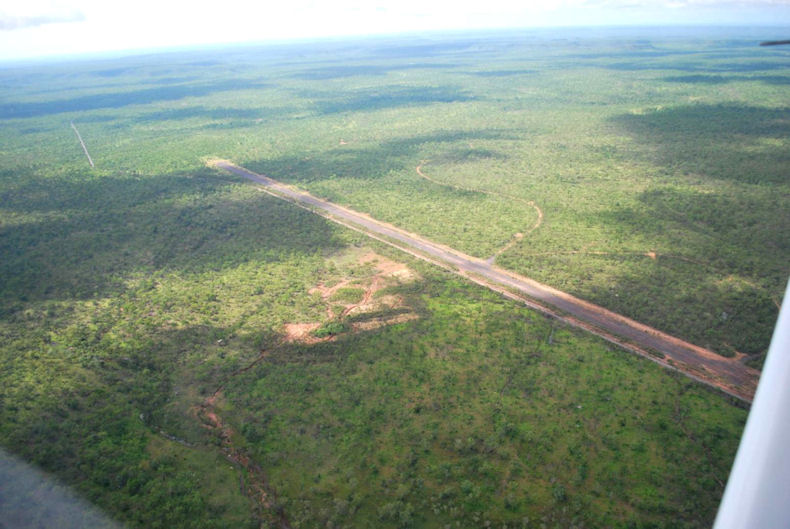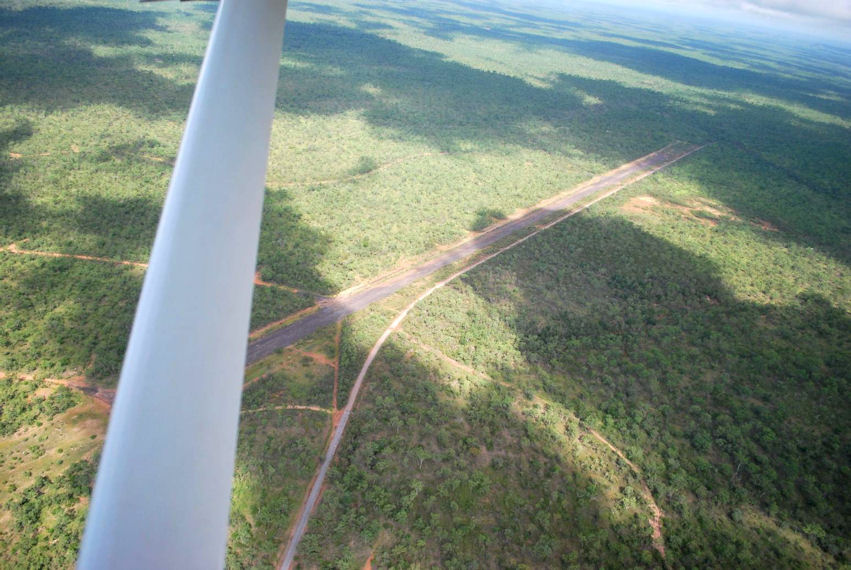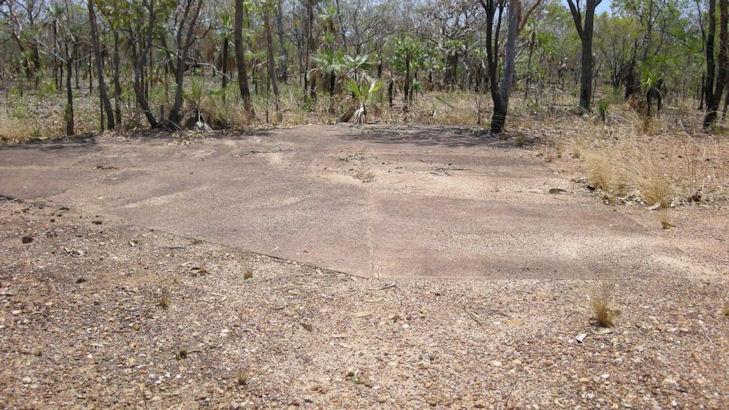McDONALD AIRFIELD, NT
ALSO KNOWN AS BURKHOLDER FIELD
DURING WW2
![]()

Fighter Guide Map - spelt McDonald on this American map
Plan of McDonald Airfield,
incorrectly
spelt as MacDonald Airfield on this plan
Burkholder Field (sometimes referred to as Burkeholder), later known as McDonald Airfield (sometimes incorrectly referred to as MacDonald), was located 10 miles north west of Pine Creek in the Northern Territory. The airfield was built by Company "A" and HQ Detachment of the 808th Engineer Aviation Battalion from 11 May to 16 July 1942 with assistance from the Australian Allied Works Council.
They built 6, 000 ft of runway, 100 ft wide with 50 ft shoulders paved with 4 inches of gravel. They also built 5,000 ft of taxiways 40 ft wide with 15 ft shoulders paved with 3 inches of gravel and 18 dispersals without revetments. Company A also built Camp buildings.
McDonald Airfield was named after Wing Commander Joshua Roger Gray McDonald (86), the Commanding Officer of 13 Squadron RAAF, who was killed along with three other crew members in the crash of Lockheed Hudson A16-69 into the sea off Ambon, Netherlands East Indies (now Indonesia) on 10 December 1941.
McDonald Airfield was first occupied by No. 54 Operation Base Unit RAAF (54 OBU) and No. 1 Airfield Construction Squadron which completed construction of the airfield in early 1943.
The B-25 Mitchells of 18th Squadron NEI-AF arrived at McDonald Airfield on 18 January 1943. They immediately began operations over the Netherlands East Indies the following day with an armed reconnaissance mission over the Kai Islands. The Squadron flew approximately 60 missions over the Netherlands East Indies. They would refuel and arm their aircraft during a stopover at the RAAF Darwin Airfield. The Squadron moved to Batchelor Airfield on 8 May 1943.
Edmond (Ted) Brault served in the 18th Squadron NEI-AF. He initially served at McDonald airfield in Western Australia. He was then posted to Oakey airfield in 1944 and served as a guard in the Security Guard Unit using guard dogs.
Spitfire A58-174 of 54 Squadron RAF made a forced landing at McDonald Airfield on 10 March 1944.
McDonald Airfield was later used during WWII as a communications location by the Australian Army.

Photo:- Doug Tilley
McDonald Airfield

Photo:- Doug Tilley
McDonald Airfield and the old Highway

Photo:- Doug Tilley
Concrete slab at McDonald Airfield
Dutch Commander presenting
WW2 medals to a Dutch Crew
B-25 Mitchell at McDonald airfield
B-25 Mitchell at McDonald airfield
Maintenance work at McDonald airfield
Dutch personnel at McDonald airfield
McDonald airfield
Sworn in at McDonald, WA
A Crash at Exmouth
McDonald Airfield 13.46's 131.43'e RAAF was abandoned in 1945.
REFERENCES
Trails of History, World War II Historic Sites - Collectors Edition, Conservation Commission Northern Territory
ACKNOWLEDGEMENT
I'd like to thank Dennis Whiley, Justin Taylan and Doug Tilley for their assistance with this home page.
I'd also like to thank Melvin Haba for his assistance with this home page. Melvin's father was Technician 5 Grade (Corporal) Laudie R Haba of Company "B" of the 808th Engineer Aviation Battalion. He would have been running the Dozers and Carry-alls during construction activities. Laudie Haba returned to the States in December 1944. Laudie passed away in 1971.
I'd also like to thank Randell Summerville and his cousin Rod Brault (son of Ted Brault) for their assistance with this home page.
I'd also like to thank Sean Carwardine for his assistance with this web page.
Can anyone help me with more information?
"Australia @ War" WWII Research Products
|
© Peter Dunn OAM 2020 |
Please
e-mail me |
This page first produced 8 October 2000
This page last updated 22 February 2020